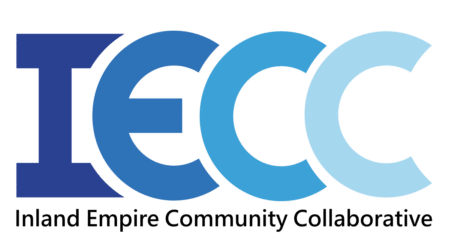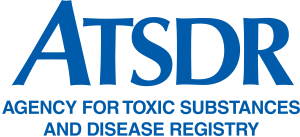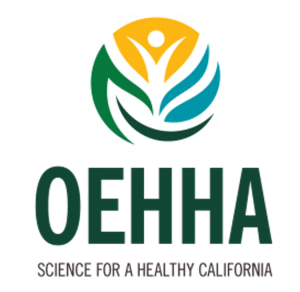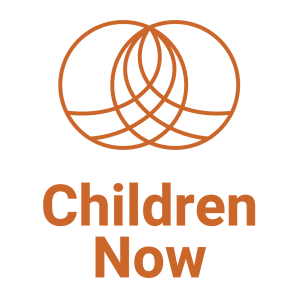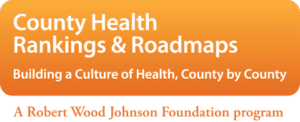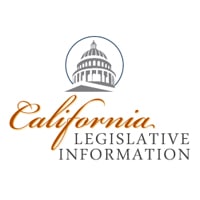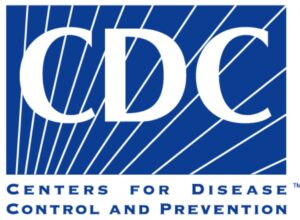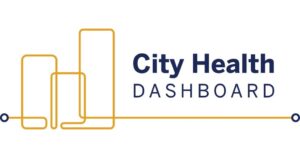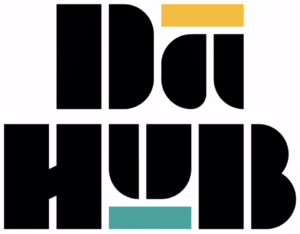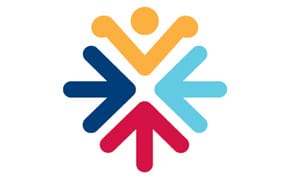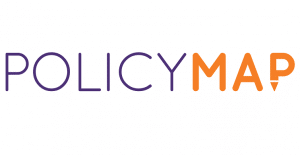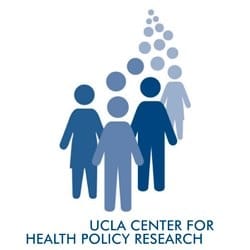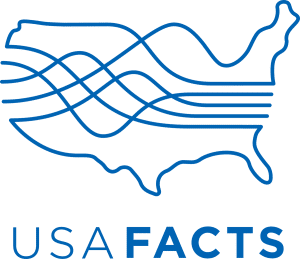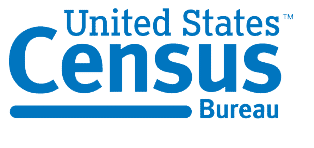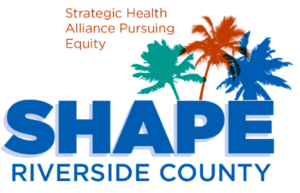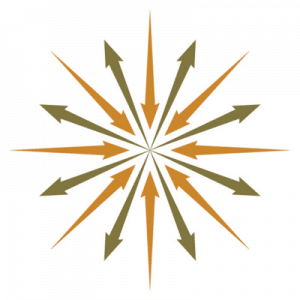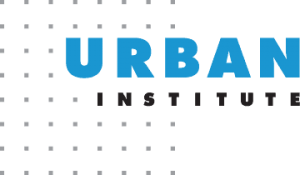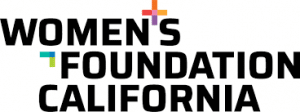Open Data & Policy Institutions
Open Data Sources
The Annie E. Casey Foundation
The KIDS COUNT Data Center
KIDS COUNT is a project of the Annie E. Casey Foundation to track the well-being of children in the United States. By providing high-quality data and trend analysis through its KIDS COUNT Data Center, the Foundation seeks to enrich local, state and national discussions concerning ways to secure better futures for all children — and to raise the visibility of children’s issues through a nonpartisan, evidence-based lens. In addition to including data from the most trusted national resources, the KIDS COUNT Data Center draws from more than 50 KIDS COUNT state organizations that provide state and local data, as well publications providing insights into trends affecting child and family well-being. Through its National KIDS COUNT Project, the Foundation develops and distributes reports on important well-being issues. Much of the data from these nationally recognized publications, including the KIDS COUNT Data Book, are featured on the KIDS COUNT Data Center.
Agency for Toxic Substances and Disease Registry
Center for Disease Control: ATSDR Social Vulnerability Index
Every community must prepare for and respond to hazardous events, whether a natural disaster like a tornado or disease outbreak, or a human-made event such as a harmful chemical spill. A number of factors, including poverty, lack of access to transportation, and crowded housing may weaken a community’s ability to prevent human suffering and financial loss in a disaster. These factors are known as social vulnerability.
ATSDR created these databases, known as the Social Vulnerability Index (SVI), to help emergency response planners and public health officials identify and map communities that will most likely need support before, during, and after a hazardous event. While this data is intended to be used to help public health officials prepare for a disaster, nonprofit organizations can use the data to identify potential regions that may be in need of particular services that nonprofit may be offering.
In addition to the downloadable databases, the CDC also provides an interactive CDC SVI Map to easily look at data by county.
CalEnviroScreen Maps
The Office of Environmental Health Hazard Assessment (OEHHA) is the lead state agency for the assessment of health risks posed by environmental contaminants. OEHHA’s mission is to protect and enhance the health of Californians and our state’s environment through scientific evaluations that inform, support and guide regulatory and other actions.
The OEHHA provides an interactive 3D maps of Pollution Burden scores, Population Characteristic scores and the twenty other indicators including PM 2.5 levels, pesticide use and hazardous waste information.
California County Scorecard of Children’s Well-Being
Children Now Scorecard
Children Now released the California County Scorecard of Children’s Well-Being, an interactive tool that delivers data on how kids are doing in each of California’s 58 counties, and tracks 39 key indicators of children’s well-being – over time, by race/ethnicity and relative to other counties – from prenatal to the transition to adulthood.
This year, we’ve added 11 new indicators to provide a more comprehensive whole-child view, including the percent of youth who identify as LGBTQ, children with Medi-Cal who had an annual preventive check-up, high school graduates who enrolled in college, and 8th graders in foster care who met or exceeded standards in math.
The tool measures each indicator on a 0-100% scale, with 100% being the ideal rating, providing an accessible snapshot of children’s well-being. Each page, which features a single indicator, also integrates additional data, such as the number of children in the county, children living with one or more immigrant parent, and breakdown by race and ethnicity, to contextualize how children are faring in a snapshot.
California Department of Education: Dataquest
DataQuest
DataQuest is the California Department of Education’s web-based data reporting system for publicly reporting information about California students, teachers, and schools. DataQuest provides access to a wide variety of reports, including school performance, test results, student enrollment, English learner, graduation and dropout, school staffing, course enrollment, and student misconduct data.
County Health Rankings and Roadmaps
The County Health Rankings & Roadmaps (CHR&R), a program of the University of Wisconsin Population Health Institute, works to improve health outcomes for all and to close the health disparities between those with the most and least opportunities for good health. This work is rooted in a deep belief in health equity, the idea that everyone has a fair and just opportunity to be as healthy as possible, regardless of race, ethnicity, gender, income, location, or any other factor.
The CHR&R program provides data, evidence, guidance, and examples to build awareness of the multiple factors that influence health and support community leaders working to improve health and increase health equity. The Rankings are unique in their ability to measure the health of nearly every county in all 50 states, and are complemented by guidance, tools, and resources designed to accelerate community learning and action. CHR&R is known for effectively translating and communicating complex data and evidence-based policy into accessible models, reports, and products that deepen the understanding of what makes communities healthy and inspires and supports improvement efforts. County Health Rankings & Roadmaps’ work is based on the County Health Rankings model of health, the Take Action cycle, and the CHR&R guiding principles.
The California Healthy Places Index
The Healthy Places Index is a project of the Public Health Alliance of Southern California, a coalition of the executive leadership of 10 local health departments in Southern California, representing more than 60% of the state’s population. The HPI is being used by local, regional, and state government agencies, as well as community groups across the state.
A project of the Public Health Alliance of Southern California, The Healthy Places Index (HPI) is a powerful and easy-to-use data and policy platform created to advance health equity through open and accessible data. Evidence-based and peer-reviewed, the HPI supports efforts to prioritize equitable community investments, develop critical programs and policies across the state, and much more.
Neighborhood-by-neighborhood, the HPI maps data on social conditions that drive health — like education, job opportunities, clean air and water, and other indicators that are positively associated with life expectancy at birth. Community leaders, policymakers, academics, and other stakeholders use the HPI to compare the health and well-being of communities, identify health inequities and quantify the factors that shape health.
California Legislative Information
The California Legislative Information website is a great place to start for general research into the California codes or more recent legislation. You can use the California Legislative Information website to:
- Find a California Code citation
- Find a specific statute
- Find the bill versions of that statute
- Find the bill file analyses
Center for Disease Control and Prevention
PLACES: Local Data for Better Health
PLACES, a collaboration between CDC, the Robert Wood Johnson Foundation, and the CDC Foundation, allows local health departments and jurisdictions regardless of population size and urban-rural status to better understand the burden and geographic distribution of health-related outcomes in their areas and assist them in planning public health interventions.
PLACES provides model-based population-level analysis and community estimates to all counties, places (incorporated and census designated places), census tracts, and ZIP Code Tabulation Areas (ZCTAs) across the United States.
PLACES is an extension of the original 500 Cities Project that provided city and census tract estimates for chronic disease risk factors, health outcomes, and clinical preventive services use for the 500 largest US cities.
City Health Dashboard
More than 80 percent of U.S. residents live in urban areas. But until recently, few measures have been available to assess health, the factors that shape health, and the drivers of health equity at the city level. That’s where the City Health Dashboard comes in. Our goal is to provide communities and city leaders with an array of regularly updated data specific to neighborhood and/or city boundaries – such as life expectancy, obesity, and children in poverty — to improve the health and well-being of everyone in the community.
With support from the Robert Wood Johnson Foundation, the City Health Dashboard launched in 2018 with data on over 35 measures of health and drivers of health for the 500 largest U.S. cities. We’ve grown since then, adding new measures and features, including multi-year data for 35 metrics, new data visualizations, and easier data access through an API. In 2020, the Dashboard expanded to include additional small and midsize cities, so data is now available for over 750 cities across the U.S. – all cities over population 50,000.
DaHub
DaHUB is a data access and content discovery technology platform developed by Black Voice News in conjunction with Mapping Black California. As a powerful new resource for Black news organizations, activists, philanthropists, academics, and more, users can leverage data discovered via DaHUB to bolster and disseminate data informed content about issues impacting the Black population in California. Access to real time and historical usable data about the Black population in California will ensure user generated content is recent, accurate, and bias-free.
Data USA
Data USA puts public US Government data in your hands. Instead of searching through multiple data sources that are often incomplete and difficult to access, you can simply point to Data USA to answer your questions. Data USA provides an open, easy-to-use platform that turns data into knowledge. It allows millions of people to conduct their own analyses and create their own stories about America – its people, places, industries, skill sets and educational institutions. Ultimately, accelerating society’s ability to learn and better understand itself.
Federal Bureau of Investigations
Uniform Crime Reporting (UCR) Program
The Uniform Crime Reporting (UCR) Program generates reliable statistics for use in law enforcement. It also provides information for students of criminal justice, researchers, the media, and the public. The program has been providing crime statistics since 1930.
The UCR Program includes data from more than 18,000 city, university and college, county, state, tribal, and federal law enforcement agencies. Agencies participate voluntarily and submit their crime data either through a state UCR program or directly to the FBI’s UCR Program.
IPUMS
IPUMS provides census and survey data from around the world integrated across time and space. IPUMS integration and documentation makes it easy to study change, conduct comparative research, merge information across data types, and analyze individuals within family and community context. Data and services are available free of charge.
From Global Health to Higher Education, IPUMS has a ton of data for you to use.
Kidsdata
Kidsdata.org, a program of the Lucile Packard Foundation for Children’s Health, promotes the health and well being of children in California by providing an easy to use resource that offers high-quality, wide-ranging, local data to those who work on behalf of children.
Through kidsdata.org, the foundation aims to raise the visibility of key issues affecting California’s children and make it easy for leaders and policymakers to use data in their work, whether that’s assessing community needs, setting priorities, tracking progress, making program or policy decisions, preparing grant proposals and reports, or other work.
Kidsdata.org allows users to easily find, customize, and use data on more than 600 measures of child health and well being. Data are available across California counties, cities, school districts, and legislative districts and cover many demographic descriptors including family income, race/ethnicity, and age.
PolicyMap
PolicyMap is a powerful tool that aggregates census data into an easy to use online map. You can select data from one of nine sets of predefined data categories: Demographics, Income & Spending, Housing, Lending, Quality of Life, Economy, Education, Health and data based on Federal Guidelines. More in-depth data and analytics, however, will come at a price with standard and premium subscriptions available.
Race Counts
RACE COUNTS measures the overall performance, amount of racial disparity, and impact by population size of counties and cities in California. We found that the past still very much drives who has access to the promise of the Golden State.
RACE COUNTS’ latest data reload shows that the extraordinary harm inflicted on low-income communities of color during the COVID-19 pandemic was the product of racist policies and practices embedded within and across our public and private institutions for decades.
Stanford Educational Opportunity Project
The Educational Opportunity Project at Stanford University has built the first national database of academic performance. View charts and maps that show how counties, school districts, and individual schools score on these three metrics: Average Test Scores, Learning Rates and Trends in test scores. You can also filter by demographics, explore opportunity gaps, export PDF reports, and more.
UCLA Center for Health Policy Research
California Health Interview Survey (CHIS)
The California Health Interview Survey (CHIS) is the nation’s largest state health survey and a critical source of data on Californians as well as on the state’s various racial and ethnic groups. Policymakers, researchers, health experts, members of the media and others depend on CHIS for credible and comprehensive data on the health of Californians.
Uniform Data Systems (UDS) Mapper
It is essential that health center organizations have access to tools and data that can assist in evaluating the geographic reach, penetration, and growth of the Section 330-funded Health Center Program (HCP) and its relationship to other federally-linked health resources. As such, HRSA, John Snow, Inc. and the American Academy of Family Physicians have collaborated to develop a mapping and decision-support tool driven primarily from data within the Uniform Data System (UDS), previously not publicly accessible at the local level.
The UDS Mapper is designed to help inform users about the current geographic extent of U.S. federal (Section 330) Health Center Program (HCP) awardees and look-alikes. The information available in the UDS Mapper includes estimates of the collective service area of these health centers by ZCTA, including the ratio of HCP awardee and look-alike patients reported in the Uniform Data System (UDS) to the target population, the change in the number of those reported patients over time, and an estimate of those in the target population that remain unserved by HCP awardees and look-alikes reporting data to the UDS (but may be served by other providers).
USAFacts
USAFacts provides a data-driven portrait of the American population, US governments’ finances, and governments’ impact on society. USAFacts is a nonpartisan, not-for-profit civic initiative without a political agenda. They provide vital spending, revenue, demographic, and performance information as a free public service and are committed to maintaining and expanding our available data in the future.
United States Census Bureau
The United States Census Bureau is the ultimate place to go to get the most data of any resource listed. The United States constitutionally collects census data every 10 years with the most recent census count having taken place in 2020. They are also one of the largest sources for accurate publicly data in the United States. Most of the other resources on this list use census data to inform their own models but you can get it right from the source! The bureau also helps to make the information digestible through the following different breakdowns.
American Community Survey (ACS)
The American Community Survey (ACS) helps local officials, community leaders, and businesses understand the changes taking place in their communities. It is the premier source for detailed population and housing information about our nation.
Census Business Builder (CBB)
The Census Business Builder (CBB) is a suite of services that provide selected demographic and economic data from the Census Bureau tailored to specific types of users in a simple to access and use format.
Current Population Survey (CPS)
The Current Population Survey (CPS), sponsored jointly by the U.S. Census Bureau and the U.S. Bureau of Labor Statistics (BLS), is the primary source of labor force statistics for the population of the United States.
Census Bureau Poverty Data
The Census Bureau provides poverty data from several household surveys and programs. Here you can find poverty estimates, learn about these surveys and programs, and get guidance on how to choose the right estimate for your needs.
County Resources
San Bernardino County Community Indicators Report
Created in 2010 to support the development of a countywide vision, the San Bernardino Community Indicators Report provides the community with an annual assessment of how the county is faring across a range of indicators.
San Bernardino County Community Vital Signs
Originally initiated by San Bernardino County Departments of Public and Behavioral Health as well as Arrowhead Regional Medical Center, Vital Signs has transformed into a community initiative to improve the health of all County residents.
Vital Signs provides a community health improvement framework and basis for aligning resources to improve the health and wellness of county residents. Vital Signs efforts are community driven and guided by the San Bernardino County Community Transformation Plan, which provides a common understanding of key issues and how social determinants impact health.
SHAPE Riverside County
SHAPE Riverside County is a community-wide effort to coordinate the resources of public health system partners to improve health for all communities in Riverside County. This initiative will be coordinated by the Riverside County Health Coalition and its leadership team.
The SHAPE Riverside County data portal is used to collect and share data relating to the Community Health Priorities and share resources and best practices across the partner network. It is a community resource of over 170 indicators related to health and social well-being. This website was launched in October 2015 and will continue to grow to meet the needs of all those pursuing a healthier Riverside County.
Policy Institutions
UCR Center for Social Innovation
The Center for Social Innovation focuses on five key areas: Civic Engagement, Economic Mobility, Immigrant Integration, Leadership & Entrepreneurship, and Place Making. Because they are part of the University of California, Riverside’s School of Public Policy, their work specifically focuses on Inland Southern California. Their activities in collaborative research, policy innovation, and narrative change are aimed to more fully realize the region’s potential in terms of its civic activities, philanthropic investments, and growing nonprofit sector.
The Public Policy Institute of California (PPIC)
The Public Policy Institute of California (PPIC) is a nonprofit, nonpartisan think tank that is dedicated to informing and improving public policy in California through independent, objective, nonpartisan research. The PPIC has the most reputable research publications that use actionable, fact-based research to help the state find practical responses to a range of policy challenges.
PPIC houses three policy centers that address topics of major importance to California.
-
- The PPIC Higher Education Center advances practical solutions that enhance educational opportunities for all of California’s students—improving lives and expanding economic growth across the state.
- The PPIC Statewide Survey provides a voice for the public and likely voters on key policy issues facing the state.
- The PPIC Water Policy Center spurs innovative water management solutions that support a healthy economy, environment, and society.
Their extensive outreach activities bring PPIC’s work to an ever-expanding audience in Sacramento and beyond with events featuring viewpoints across the political spectrum, promoting constructive, thoughtful, and respectful dialogue on the issues that matter most to California.
Urban Institute
The Urban Institute is the trusted source for unbiased, authoritative insights that inform consequential choices about the well-being of people and places in the United States. They are a nonprofit research organization that believes decisions shaped by facts, rather than ideology, have the power to improve public policy and practice, strengthen communities, and transform people’s lives for the better.
Urban Institute experts diagnose current challenges and look ahead to identify opportunities for change. Additionally, their research findings to help stakeholders craft relevant solutions and strategies that address today’s concerns and avert tomorrow’s roadblocks. They share their insights in real time with influencers eager to make smarter decisions.
Women's Foundation of California
The Women’s Foundation California is a statewide, publicly supported foundation dedicated to achieving racial, economic, and gender justice by centering the experience and expertise of communities most impacted by systemic injustice.
They get it done by providing grants to community-led organizations, training community leaders through the Women’s Policy Institute, and fostering a community of advocates, donors, policymakers, grantmakers, academics and many others through convenings to share knowledge and strengthen the social justice movement in California.

